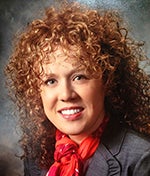Guest Columns: What are the options for paying for senior care?
Published 9:00 am Sunday, April 2, 2017
Guest Column by Katie Davis
Transitioning from an individual’s home to a senior care community can oftentimes be very stressful. One of the most difficult things to understand is how to go about paying for care, services and living options at senior care locations.
Since 1976, Minnesota has had a statute known as the rate equalization law for nursing homes, under a section titled “Conditions of Participation” (256B. 48). Under this law, facilities must provide equal services to nursing facility residents, regardless of payer source, and cannot charge private paying residents more (or less) than the rate paid by the state under its medical assistance (Medicaid) program. Private pay, also called self-pay, means you use your own resources and finances to pay for the care you receive. Any services, senior living or care you choose can be paid for by private pay. A private health insurance policy typically covers preventive care and deductibles toward things like prescriptions, specialized doctor visits and elective procedures. Some individual health insurance companies may cover after-hospital recovery, skilled nursing care or in-home services, but usually only on a temporary and short-term basis.

Katie Davis
Long-term care insurance policies are specifically for helping individuals pay for services that they will need over a long period of time.
Unlike Medicare or private insurance policies, long-term care insurance policies may cover things like assisted living, nursing home and home care services. Long-term care insurance policies reimburse policyholders a daily amount (up to a pre-selected limit) for services to assist them with activities of daily living such as bathing, dressing or eating. Individuals should consult with their policy holder for more information on how these benefits may work.
Many seniors are enrolled in Medicare, the federal government’s health insurance program. The basic coverage — Medicare Part A and Medicare Part B — can help individuals pay for hospital stays, doctor visits and care and equipment that are medically necessary. While Medicare policies may help pay for short-term care an individual will need to recover, Medicare does not cover long-term nursing home stays, assisted living services or in-home personal care and help with daily activities (also called custodial care).
Medicaid is a federal- and state-funded program that helps people with very limited income and resources pay for health and medical expenses. Coverage and eligibility for Medicaid varies from state to state. Most Medicaid programs will help individuals pay for doctor visits, health equipment, prescriptions, lab and X-ray services, and inpatient and outpatient services from a hospital or care center. Unlike Medicare, Medicaid may also cover long-term care services like nursing home stays, assisted living services and in-home personal care if you qualify for your state’s Medicaid program.
If you’re a veteran who served active military duty, you may be eligible to receive health care benefits from the U.S. Department of Veterans Affairs. Your eligibility and coverage may vary, but VA benefits typically cover preventive care, inpatient care, specialty care and emergency care.
Understanding these many payment options and how to prepare to utilize them may be difficult for consumers. Being educated early on payment options and how to utilize health benefits is important. Senior care providers in our area can help answer these questions. Minnesota also has a valuable free resource called Senior LinkAge Line, which can help connect consumers to resources in our area.
Katie Davis is the executive director at Good Samaritan Society of Albert Lea.

